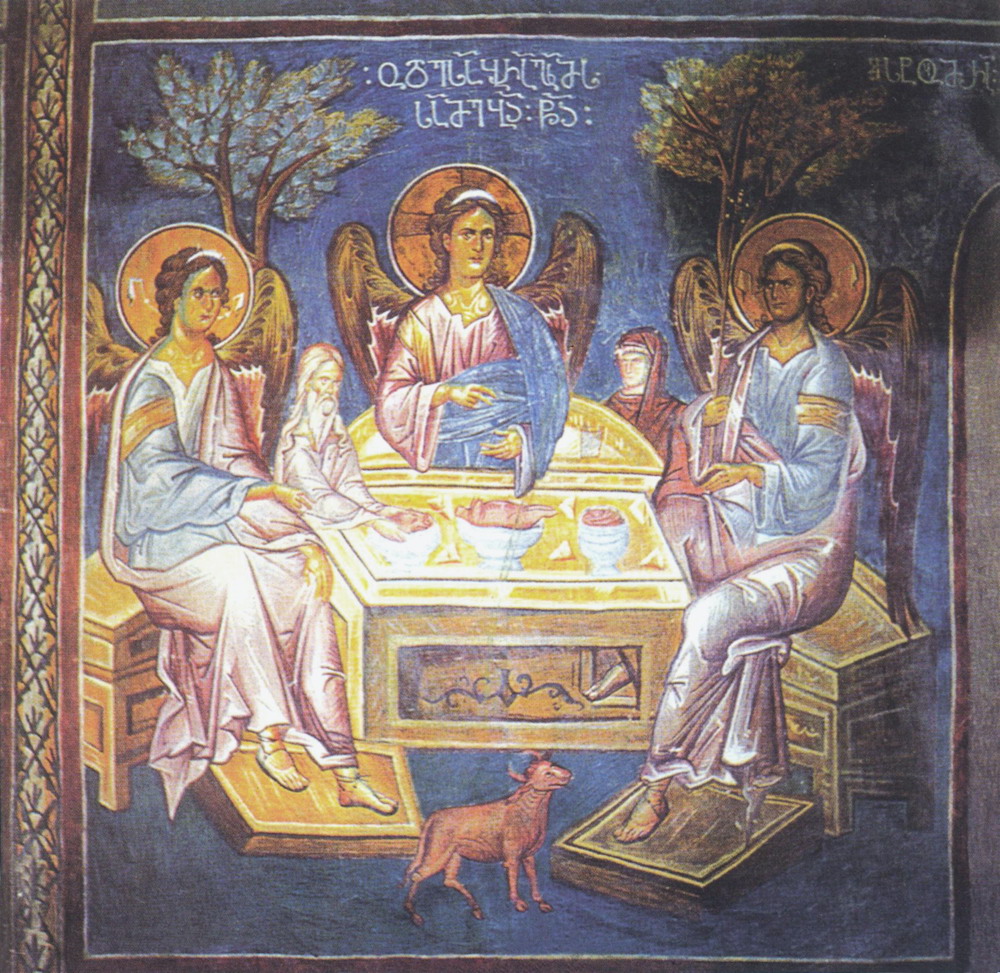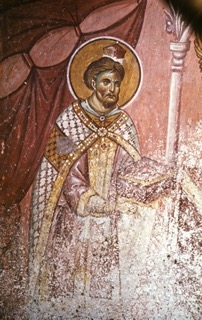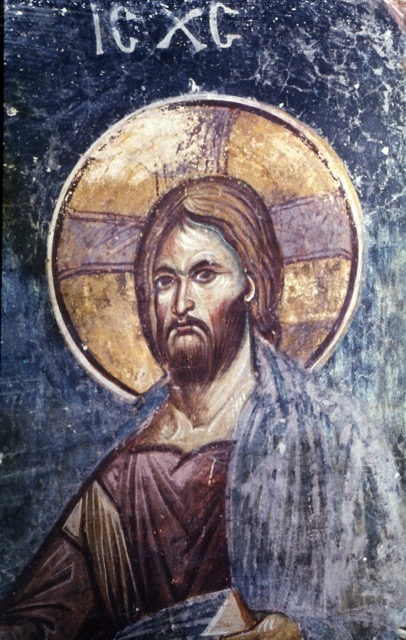
Feel free to add tags, names, dates or anything you are looking for


Likhne is a small village in Abkhazeti, one of the oldest historic kingdoms of Georgia. Along with the rulers of Kartli and Tao-Klarjeti, the kings of Abkhazeti were leaders in attempts at uniting the different Georgian kingdoms and principalities into one state. The first king of the united state of Georgia, Bagrat III, was a descendant of the Abkhazian royal family as well as of the Kings of Kartli.
Likhne, Church of the Dormition of the Virgin, end of the 10th c.
The Church of the Dormition of the Virgin is located near the Black Sea coast, in the Likhne village, not far from Gudauta (the regional center). This large cross-domed church dates back to the turn of the 10th - 11th cc. It is built of well cut stone, has three projecting apses from the east, and features three large open-arched porticos to the north, south and west. Nearby the church remnants of different buildings can be observed: a belfry, and the palace of the Shervashidze family – rulers of the Abkhazian principality in the 17th - 16th cc. amongst others. The architectural design of the church, the building materials and other features are characteristic of medieval Georgian architecture from this period, although interaction with Byzantine architecture is also noticeable.
Likhne, Church of the Dormition of the Virgin, end of the 10th c.
The church was decorated with murals from the very beginning of the 11thc. Unfortunately, very scant fragments of these paintings are preserved in the diaconicon and prosthesis, mostly comprising ornamental bands, as well as a few figures: e.g. the figure of the Prophet Zachariah with an accompanying Georgian inscription. Both the paleography of the inscriptions and the style of the painting reveal many common features with murals from this period in other regions of Georgia, namely Tao-Klarjeti.
In the 14th century, the entire interior of the church was painted from anew, presumably by a joint group of Georgian and Greek artists, or Georgian painters who had received training in certain Byzantine artistic centers.
Likhne, murals in the sanctuary, 14th c.
Although major portions of the paintings are currently in a demolished and defaced state, the preserved fragments display a quite unique and sophisticated theological program, the focus of which is the Glory of the Virgin. Indeed, this theme penetrates the whole painting: the Virgin is depicted in the dome, while the sanctuary apse and west wall are dedicated to her Dormition and Ascension.
The semi-sphere of the dome is divided into eight segments by the stone “arms” of the Cross that resemble the monogram of Christ. There are figures of archangels in each segment, and a figure of the Virgin-Orans in the eastern section. In contrast with current practice, there is no image of Christ in the dome of Likhne Church. Instead, the image of the Virgin is particularly highlighted.
Likhne, painting in the dome, 14th c.
The program of the sanctuary is also dedicated to the Virgin, and is based on the idea of the Eucharist. The Glory of the Virgin is represented in the conch of the sanctuary apse (at present only small fragments remain). In the register beneath the conch there is a representation of the Communion of the Apostles, featuring rare iconography of the 12 Apostles in groups on either side of the altar under a ciborium, and double figures of Christ officiating with the figure of Judas retreating from the altar.
The lower register depicts figures of the Holy Bishops as part of the Melismos (Veneration of the Holy Sacrifice).
Likhne, biblical scenes in the sanctuary, 14th c.
The most interesting part of the sanctuary painting is displayed on the walls of the presbytery. There are several scenes referring to the Eucharist, as well as to the notions of Sacrifice and Incarnation. These are: the Hospitality of Abraham, Abraham and Isaac heading to the place of sacrifice, and the Sacrifice of Abraham.

Likhne, Hospitality of Abraham, 14th c.
There is a rare scene portraying the Tabernacle of Testimony in the form of a building: an altar under the ciborium in the interior featuring the Ark of the Covenant with golden figures of cherubs and two figures with censers, presumably Moses and Aaron, on either side of the altar. All these scenes are biblical prefigurations of the Eucharist, while the scene with the Tabernacle specifically refers to the Virgin, as attested by her half-figure image on the Ark. Besides these, two scenes of the Resurrection are presented on the south wall: namely the Holy Women at the Tomb, and Christ appearing before the Holy Women.

Likhne, Abraham leading Isaak for sacrifice, detail, 14th c.

Likhne, Tabernacle of Testimony, Aaron, detail. 14th c.
Only two scenes from the Christological Cycle are preserved to the present day – namely the Nativity and the Anastasis. On the arches and pilasters, images of the Holy Prophets, Holy Hermits, Warrior Saints, and Stylite Saints are depicted.
Likhne, images of saints on the pillars, 14th c.
An elaborate and interesting iconography of the Dormition of the Virgin is depicted on the west wall: a traditional composition of the Dormition (only fragmentarily preserved) is enriched by a representation of the Apostles gathering in clouds around the Virgin, and a scene of the Ascension of the Virgin.
The theme of the Virgin is also displayed in the southern annex, where she is depicted in Paradise seated on a throne and accompanied by two angels, forming part of the now lost composition of the Last Judgment.
There are numerous inscriptions that are preserved in both Georgian and Greek languages. In the ancient descriptions, more than fifteen noteworthy Georgian fresco inscriptions from the 11th c. are documented, referring to different historic events and famous persons of the 11th -14thcc., including Giorgi II and his son Bagrat IV – Kings of the united kingdom of Georgia. One of these inscriptions refers to the appearance of a comet in 1066.
Likhne, images of saints on the pillars, 14th c.
The murals of the 14th c. adhere to the Palaeologan style: displaying elongated figures, the modeling of faces using thick brush-strokes, green shadows, bright highlights, detailed narrative content, refined color gamut, and the expressiveness of faces and gestures; the dynamic compositional structure, elaborated architectural and landscape settings, as well as other features that are characteristic of this style. Interaction with contemporary Byzantine wall paintings, namely the Palaeologan style, is obvious since this also occurred in other parts of Georgia. Nonetheless, in Abkhazeti the influence of Byzantine art and architecture was much more clearly pronounced.

Likhne, Communion of the Apostles, Christ, detail. 14th c.
Although there is no direct evidence in historic sources or even among the inscriptions, the high artistic level of the 14th century murals indicate the elevated rank of a royal or ecclesiastic commissioner.